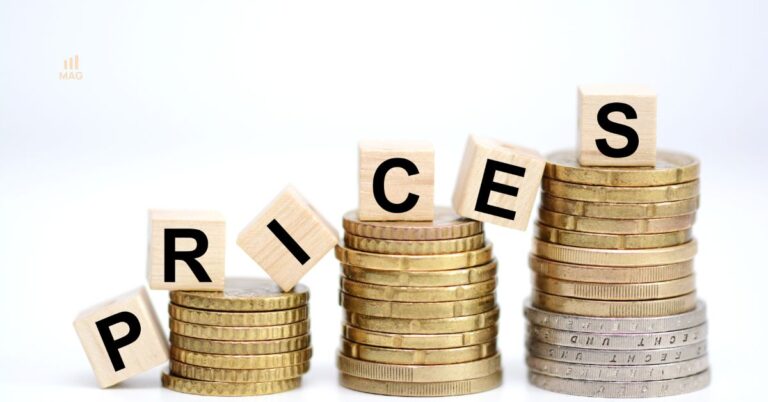
For sellers, the Amazon Price Increase Controversy highlights a critical divergence in retail strategy, where Amazon is accused of passing tariff-related costs to consumers while competitors like Walmart actively cut prices on similar goods.
Amazon’s dynamic pricing model, with over 250 million daily changes, often feels like a black box to sellers. It’s a system built on constant, algorithm-driven adjustments that are difficult to track.
This lack of transparency is now at the heart of the Amazon Price Increase Controversy, sparking doubts over whether the company used its complex pricing structure to quietly defy its own April pledge. When the platform’s own prices are under scrutiny, it creates instability for every seller on it.
This report breaks down the allegations, examines Amazon’s position, and clarifies how this controversy impacts your standing in a marketplace defined by price volatility.
Price Gaps Widen as Retailers Respond Differently to Tariff Pressure
The recent Amazon Price Increase Controversy has brought the company’s dynamic pricing strategy under intense scrutiny. The debate goes beyond a single report, touching on the complex interplay between trade policy, business models, and corporate pledges in today’s retail environment.
Unpacking the Allegations: Amazon's Pricing Under Fire
The Amazon Price Increase Controversy intensified after an analysis reported by The Wall Street Journal revealed that Amazon raised prices on more than 1,200 low-cost household items. During the same period, competitor Walmart lowered prices on those same goods by nearly 2%, raising concerns about Amazon’s April pledge to “hold the line” on prices.
Amazon defended its pricing model, arguing the Journal’s sample size was not representative of the platform’s broader catalog. The company maintained that price fluctuations were within the normal range and that it delivers value through overall affordability.
However, some items that saw increases did not have corresponding cost hikes from their manufacturers. For instance, Dayglow LLC reported it had not changed the price of its stackable metal baskets to Amazon, even while absorbing new tariff-related import costs.
The metal baskets, once sold for $9.31 in February, were priced at $19.99 by late April. This surge occurred shortly after a new executive order signaled sweeping tariffs, prompting Amazon to adjust prices on key imported products.
A major spike in prices was observed on February 15, particularly affecting low-cost “everyday essentials.” This category accounted for one in every three units sold on Amazon’s U.S. marketplace in the first quarter of 2025.
These products often generate minimal profit for Amazon due to high shipping costs, making the company vulnerable to margin erosion from tariffs. In contrast, Walmart can subsidize losses on low-margin online items with profits from higher-margin goods sold in its physical stores.
Broader Context and Industry Reactions on Amazon Price Increase
Other factors beyond the direct controversy have also shaped recent pricing, including inflation, supply volatility, and promotional events like Prime Day. While some prices dipped temporarily during the July 8–11 Prime Day window, most have since rebounded.
Some price drops resulted from new product version rollouts, while others were tied to seasonal promotions. Amazon also claimed that many items in the Journal’s report were frequently out of stock on competitor sites, complicating direct comparisons.
What the Data Shows About the Tariffs, Retail Reactions, and Rising Prices
Reuters"68% of US companies increase their products' prices in response to Trump tariffs."
A recent study from Harvard Business School provides critical context on how retailers nationwide are navigating the economic pressures of new tariffs.
Price Inflation from Tariffs
Retail prices often respond to economic pressure points like tariffs, but recent research shows the response has been more measured than many expected. Harvard Business School featured this issue in the informative article exploring whether retailers are passing the cost of rising tariffs to consumers.
The study found that while prices started to climb days after major tariff announcements, the actual increases were smaller than the scale of the levies suggested. This trend was identified in the working paper “Tracking the Short-Run Price Impact of US Tariffs” by Professor Alberto Cavallo.
Using data from major U.S. retailers, the team found that a 1.2 percentage point increase in imported product prices occurred after March 4. This jump aligned with the announcement of new tariffs on Canadian, Mexican, and certain Chinese imports.
Following the widespread tariff announcement on April 2, price increases gained momentum. Despite this, the overall pass-through to consumers remained limited due to short-term strategies that retailers used to absorb the shock.
According to the research, these strategies include reducing margins, accelerating imports before tariffs take effect, and shifting sourcing to avoid affected trade routes. Interestingly, U.S.-made goods are not immune, as many rely on imported components or see price hikes due to growing domestic demand.
Adapting to Margin Pressure with New Strategies
According to Retail TouchPoints, businesses must adapt with smart pricing, efficient marketing, and strategic AI use to stay profitable in 2025.
Rising supplier costs, volatile tariffs, and climbing digital ad rates have left little room for error in ecommerce budgets. Amazon’s recent pricing decisions are only intensifying the challenge, forcing brands to reconsider their strategies amid heightened cost sensitivity among consumers.
Testing Value Perception Over Blanket Increases
With consumers more price-conscious than ever, blanket price hikes risk damaging trust and reducing sales volume. To navigate this, many brands partner with an Amazon agency to refine pricing strategies based on data, considering product value perception, customer segmentation, and promotional alternatives like bundles or selective discounts.
Key questions brands should ask before updating prices:
- Will fewer sales at better margins offset broader price hikes?
- Are some product categories more price-sensitive than others?
- Can discounts or bundles cushion the perception of increased prices?
- Is there room for a lower-cost version of a top-selling item?
Get the Best Value Out of Every Dollar
As ROAS declines across ad platforms, brands are optimizing marketing by focusing on high-efficiency tactics that rely on first-party data and advanced segmentation. Faster algorithm training, real-time performance measurement, and predictive analytics are helping marketers adjust spend quickly to reduce waste and improve performance.
Tactics to stretch limited budgets:
- Use first-party data to drive targeted offers and retention campaigns.
- Accelerate ad learning by identifying high-value audiences up front.
- Segment audiences by lifecycle and behavior to tailor messaging.
- Monitor performance mid-campaign and pivot based on predictive insights.
Leverage AI for Pricing Insights
AI is no longer optional, it’s essential for brands under pricing pressure. But success comes down to choosing tools that prioritize transparency and actionability based on actual customer behavior.
Examples of AI-driven strategies:
- Build personas using real purchase behavior and preferences.
- Use predictive LTV models to improve acquisition strategy.
- Identify churn risks or likely repeat buyers to drive retention.
According to the Retail TouchPoints article, brands that embrace AI with intention, not just automation, can transform customer insights into profitable action.
As pricing becomes a battleground, ecommerce brands must lead with strategy, not reaction. The brands that will withstand Amazon’s price changes are those that treat pricing as a lever, not a liability.
Council of Foreign Relations"Items that American consumers often buy at a local Walmart or Target, imported goods like clothes and shoes, foodstuffs, toys, and audio and video equipment, saw notable price increases in June."






